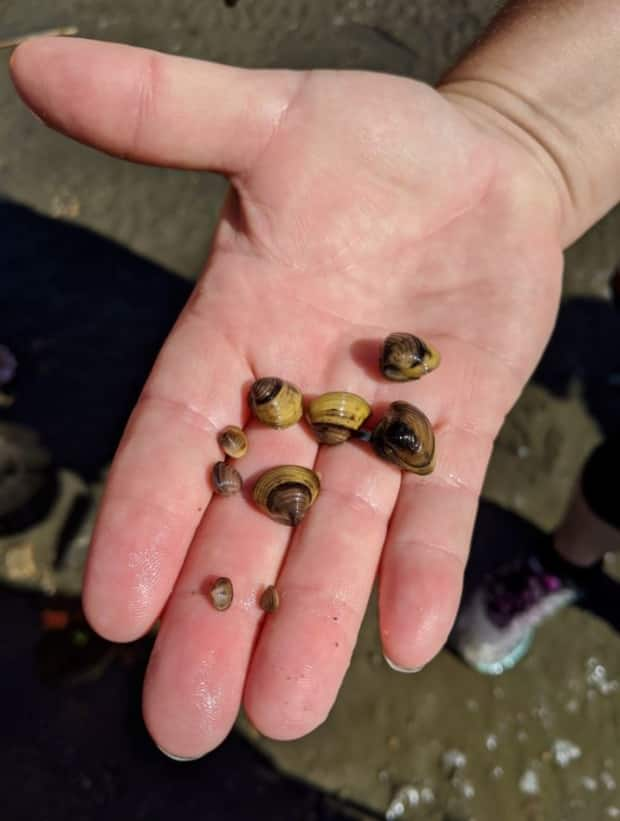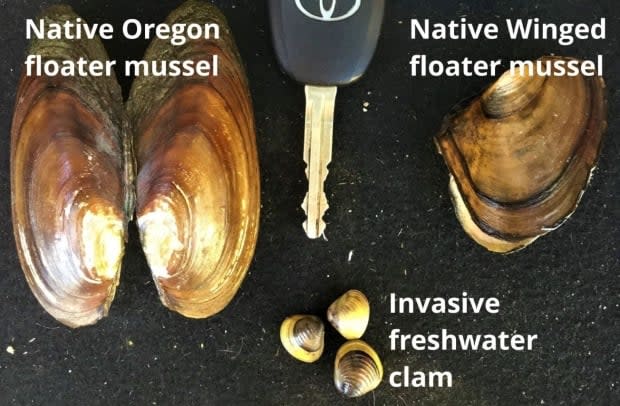Invasive clam species found in Central Kootenay river, conservationists ask boaters to stop the spread

The Central Kootenay Invasive Species Society (CKISS) is asking for the public's help in preventing the spread of an invasive freshwater species called the Asian clam.
The non-native clams were found in the Pend D'Oreille River this spring, according to a written release from the Ministry of Environment, and although this is not the first confirmation of these clams in B.C., it's the first time officials have spotted them in the Central Kootenay region.
"They can out-compete our native populations and also reduce the biodiversity in those ecosystems," CKISS executive director Erin Bates said on the CBC's Daybreak South. "The presence of a new invasive species means that our native species are going to be facing a new threat on top of the threats that are currently posed by climate change and human activity.
In 2020, Asian clams were found in Shuswap Lake and they have also been spotted in Lower Mainland waterways.
Bates said the society is worried because Asian clams can also clog water treatment systems, contaminate drinking water and negatively alter aquatic ecosystems by competing with native clam species for food and habitat.

Microscopic larvae of the invasive species could have "hitch-hiked on a watercraft or gear" to arrive in the river.
"We wouldn't expect that population to spread here naturally," Bates continued, "but it's entirely possible that they were also spread by human activity and unfortunately [Asian clams] are also used as bait and can be found in aquariums."
To prevent further spread, Bates urges people to clean and dry their watercraft and gear to ensure invasive species aren't being moved between water systems. And never dump the contents of home aquariums into streams or lakes.
She also asks people to report any sightings.
"They are typically triangular shaped and they're usually less than two and a half centimetres," Bates said. "They can be yellow, green to light brown and they have a very elevated growth rings, which differentiates them from our native species.
LISTEN | Erin Bates talks about invasive freshwater Asian clams on the CBC's Daybreak South:

 Yahoo Finance
Yahoo Finance 